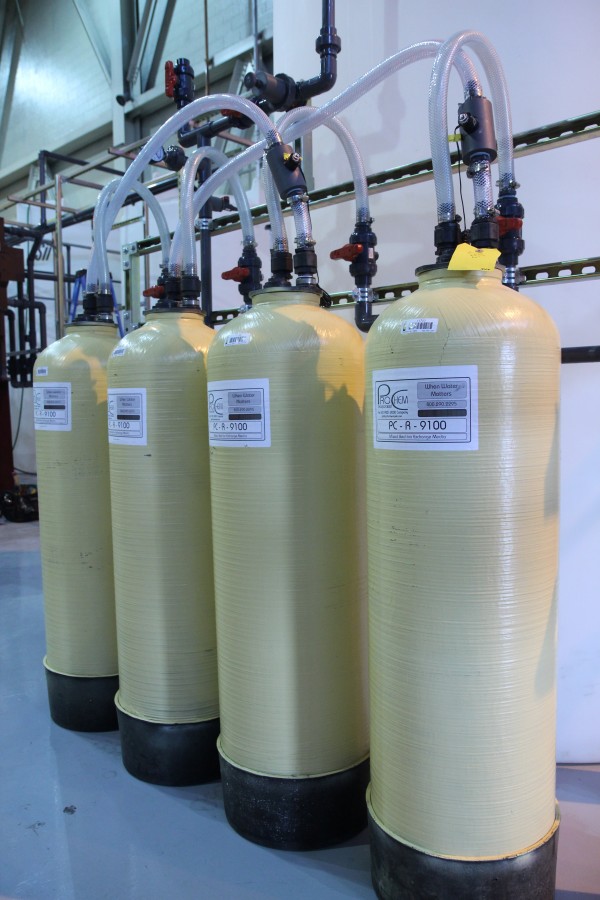
Ammonia can be detrimental to the environment and therefore its concentrations are regulated with discharge permits. For example, when Ammonia enters a lake or stream, aerobic organisms begin to break it down into Nitrates. The excess of Nitrates fuels eutrophication, which can lead to the degradation of that water supply and the quality of that habitat for wildlife. Manufacturers have many choices for systems that remove Ammonia from their wastewater. An ion-exchange system is the most flexible, least labor intensive, and most cost efficient method of all of them.
The ion-exchange system setup
These systems are easily installed and integrated with existing wastewater treatment equipment. It can be installed at the source of the Ammonia introduction, before it reaches the main wastewater stream, or it can be installed at the end of the waste treatment process before discharge. These systems are also easily removed. For example, if the source of the Ammonia is found and eliminated, the columns are easily returned to the vendor. Ion-exchange equipment consists of a series of columns containing resins, a pump, and a filter to remove particulates. The first column receives filtered wastewater and usually contains carbon, which is used to remove organics from the water that might foul the resins in the remaining columns. The columns that follow contain ion-selective resin that is designed for Ammonia removal. For many applications, ion-exchange systems can be setup on a small scale with a footprint no larger than two feet by eight feet or less. The size of the system depends on the flow rate that is required and the concentration of Ammonia that exists in the wastewater.
What about regenerating?
Ion-exchange resins do become exhausted after multiple uses, which means they become less effective. When ion-exchange resins become exhausted, they can be regenerated to restore their effectiveness. There are two options available for manufacturers to have their ion-exchange resins regenerated:
- Regeneration on site: In order to regenerate ion-exchange resins on site, at your facility, you will need to have a hard-piped regeneration system installed there. This approach can be expensive, as it does require the purchase of capital equipment and chemicals. It also requires space in addition to the ion-exchange system itself and a method for treating the wastewater from the regeneration process (which utilizes chemicals).
- Exchange columns for regeneration off site: Some industrial water treatment companies offer column exchange programs, which is the most versatile setup for a manufacturing facility. In this process, the vendor will exchange your columns containing the exhausted ion-exchange resins for fresh columns. This allows your wastewater treatment system to stay in operation while your exhausted resins are being regenerated. Because the regeneration process takes place off-site, not at your facility, there is no need for treating wastewater from a regeneration process at your site, and no need for additional equipment or space in your facility.
ProChem strives to help their customers establish the highest level of credibility and a positive reputation within the regulatory community. Their goal is to significantly reduce the amount of fresh water that manufacturers require by providing sustainable solutions that will also benefit the customer’s bottom line.
